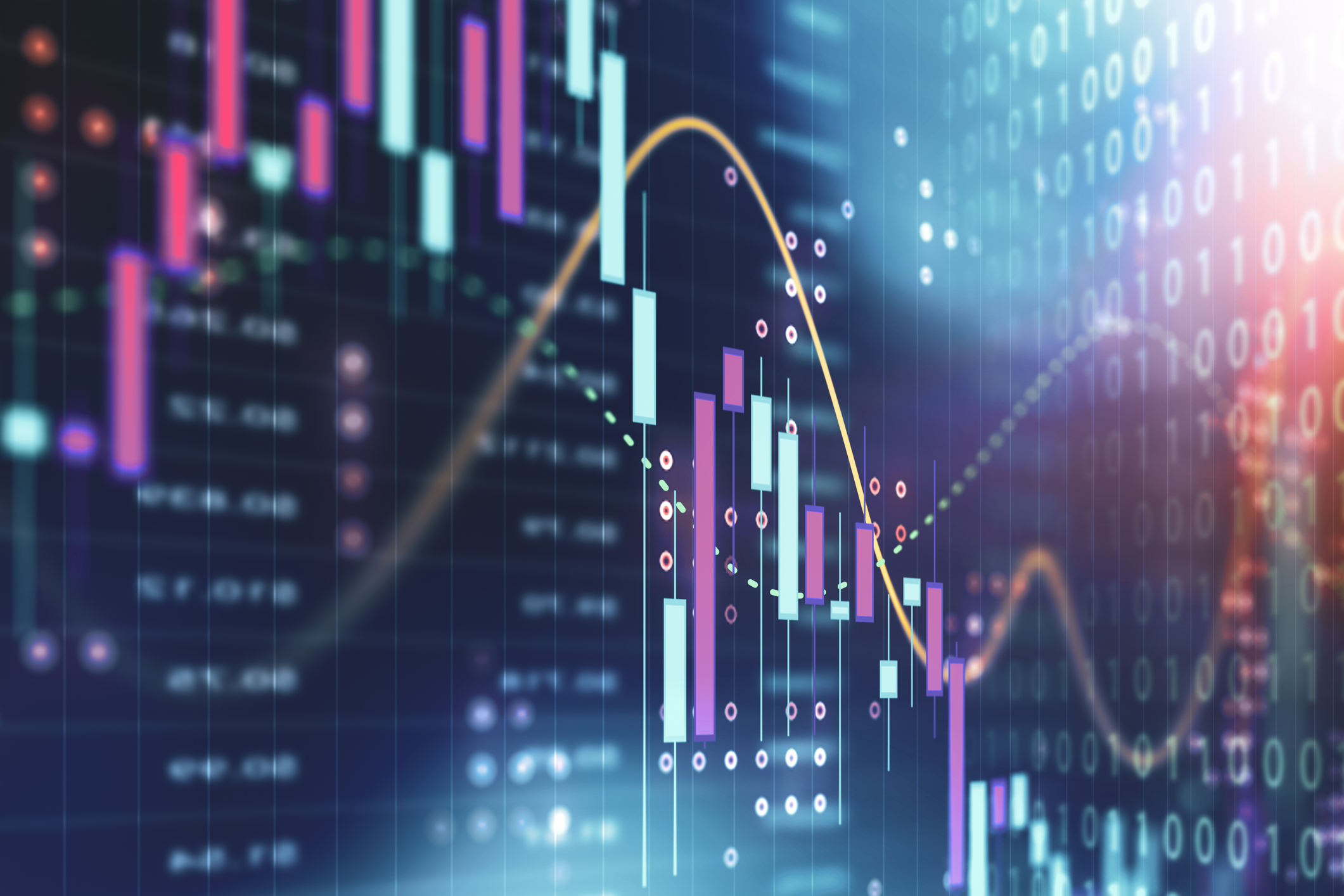Buy Homebuilders’ Stocks If You Dare
Housing could do better than people think. That's all that has to happen for building stocks to climb.

Suggest -- just suggest -- that now might be a good time to buy the stocks of homebuilders, and you will almost certainly be considered out of your mind. Few sectors in recent history have fallen so far so fast, and prospects still appear dim.
To understand how terrible the business of building and selling houses in the U.S. has become, take a look at Beazer Homes USA (symbol BZH), a midsize company based in Atlanta. In 2006, Beazer was riding high, with $5.5 billion in revenues and profits approaching $400 million. Early that year, Beazer’s stock had reached $82. And then, very quickly, the bottom fell out. By 2008, sales had dropped to $2 billion; by 2009, they’d slumped to $1 billion -- a decline of 82% in only three years. On March 9, 2009, the last day of the horrific 18-month-long bear market, Beazer’s shares dropped to 25 cents.
Dispiriting Forecast
The stock has since bounced back to $4, still 95% below its high (all prices and related data are through June 3). The Value Line Investment Survey expects Beazer’s annual loss to widen this year compared with last and sees 2012 producing the sixth annual deficit in a row.
From just $107.88 $24.99 for Kiplinger Personal Finance
Be a smarter, better informed investor.

Sign up for Kiplinger’s Free Newsletters
Profit and prosper with the best of expert advice on investing, taxes, retirement, personal finance and more - straight to your e-mail.
Profit and prosper with the best of expert advice - straight to your e-mail.
Beazer is not alone. Sales for the nation’s largest homebuilder, PulteGroup (PHM), collapsed 56% between 2006 and 2008. KB Home (KBH), a Los Angeles–based builder, suffered losses totaling $2.6 billion between 2007 and 2010 -- a figure that’s nearly three times its current market value (stock price times shares outstanding) of $884 million (stocks in boldface are those I recommend).
Home building has not merely fallen; it can’t get up. The seasonally adjusted annual rate of new housing starts in April was just 523,000, a decline of 23.9% from April 2010. That compares with more than two million new-home starts in 2005 and an average of 1.5 million a year since 1960.
Meanwhile, home prices are still dropping. Nationwide, they fell 5.1% for the year that ended March 31 and are off about one-third since the peak nearly four years ago, according to the S&P/Case-Shiller Home Price Indices. No wonder Value Line ranks home building dead last among the 98 industries it ranks for “probable performance” over the next 12 months.
So Why Even Consider Home-Building Stocks?
The main reason is that the current and future misery of the sector is already reflected in share prices. If you believe in efficient markets, the market has already discounted (that is, anticipated) the poor performance of the housing industry. Investors expect the worst -- or close to it.
Here is how Pulte described market conditions in its 2010 annual shareholder report: “Since early 2006, the U.S. housing market has been unfavorably impacted by weak consumer confidence, tightened mortgage standards, and large supplies of resale and new home inventories and related pricing pressures, among other factors. When combined with significant foreclosure activity, a more challenging appraisal environment, higher than normal unemployment levels, and uncertainty in the U.S. economy in recent periods, these conditions have contributed to sharply weakened demand for new homes, slower sales, and heightened pricing pressures to attract home buyers.”
That about sums up the situation -- and everyone knows it. Could a stock like Pulte, which has fallen from a high of $48 in 2005 to $8 currently, go lower? Of course. But a major slide will occur only if the market starts suspecting that the future will be even worse than the rottenness that it expects at the moment. My guess -- and I admit that it is only a guess -- is that housing could do better than people think. That’s all that has to happen for building stocks to climb.
We are in utterly new territory. In the half-century before 2008, the U.S. had never experienced a year with fewer than one million housing starts. Now, it is nearly certain that we will have four such years in a row. But the U.S. continues to grow, new households are formed, and new houses are needed. Every factor cited by Pulte as dampening demand is transitory: heavy foreclosures, high unemployment, tight mortgage standards and so on. It is just hard to envision the change -- which is precisely the point. For investors, the best opportunities often occur when most other investors can’t conceive of conditions ever being different from today.
What’s just as remarkable as the sector’s devastation is its survival. Imagine that you own a restaurant whose sales fall by three-fourths in just a few years. Most likely, you would be bankrupt. But homebuilders entered 2007 in strong shape, and most of the public companies have kept their balance sheets intact. Consider M.D.C. Holdings (MDC), a smallish builder based in Denver that generated $1 billion in sales last year. Debt is $1.2 billion, but M.D.C. is sitting on $1.5 billion in cash, and it pays just $64 million in interest annually to service its long-term debt.
By far the strongest of the homebuilders is NVR (NVR), with practically no debt ($1.8 million, to be precise) and a cash stash of $1.2 billion. The company, based in Reston, Va., and serving 14 states, with an emphasis on the Washington-Baltimore area, has not lost money in any year during the downturn. I cite NVR not as a recommendation (at a price-earnings ratio of 25 based on 2011 earnings estimates, the stock is too expensive) but as evidence that the sector has been surprisingly resilient.
Also in good shape is Toll Brothers (TOL), which focuses on the high-end home market. It has $1.3 billion in cash, with $1.7 billion in debt. In late May, the company announced a sharply lower loss because of improved sales and profit margins and reduced cancellations of homes that had been previously ordered. Fence-sitters were coming back into the market. Analysts, on average, expect Toll Brothers to eke out a profit in the fiscal year that ends this October, marking the company’s first year in the black since the year that ended October 2007.
Turnaround Picks
NVR, Toll and M.D.C. are the strongest homebuilders, and for that reason I find them the least attractive. You should buy this sector for its turnaround prospects, so look closely at companies like Pulte, which targets middle-income Americans (average sales price in 2010 was $259,000) and has suffered poor sales accordingly. Pulte bought Dallas-based Centex in an all-stock deal in 2009 to become the largest homebuilder. Pulte is cutting costs effectively, and if the housing market turns around, profits could soar. In 2003, Pulte earned $2.46 per share, or nearly one-third of the current stock price. Getting back to the amount of profits Pulte earned in 2003 won’t be easy, but investors with patience have a decent chance of seeing such a comeback.
The profile of Ryland Group (RYL), which concentrates on Texas and the Southeast, is similar to Pulte’s. It has an average home sales price of $242,000, and its revenues and stock price are both down about 80% from their highs. Value Line projects earnings of 90 cents a share for 2012, and the average analyst forecasts 58 cents, but don’t take these estimates seriously. By investing in Ryland, now trading at $17, you are betting that the company can get back on its feet and, within a few years, earn the $5 per share that it earned, on average, between 2000 and 2006.
If you want to invest in the entire sector, you have a problem. Only two major exchange-traded funds focus on homebuilders, and they dilute their portfolios with mattress companies, carpet makers, kitchen-supply retailers, and the like. Only about 28% of the assets of the larger of the two ETFs, SPDR S&P Homebuilders (XHB), is invested in true home-building stocks. Only one homebuilder, Pulte, is among the five biggest holdings.
The other ETF, iShares Dow Jones U.S. Home Construction Index (ITB), is more useful, with 65% of its assets in homebuilders, led by NVR. Over the past five years that ended June 1, the ETF lost a whopping 20.4% annualized, compared with an annualized loss of 12.0% for the watered-down S&P offering. The performance of both is near the bottom of all stock funds over the period, according to Morningstar.
To invest in home-building stocks at a time like this requires an open mind -- rather than paying them no mind at all -- as well as a spirit of adventure and a taste for the contrary. Plus, you’ll need solid, low-risk holdings in the rest of your portfolio to provide ballast.
James K. Glassman, executive director of the George W. Bush Institute in Dallas, is author of Safety Net: The Strategy for De-Risking Your Investments in a Time of Turbulence (Crown Business). He owns none of the securities mentioned.
Profit and prosper with the best of Kiplinger's advice on investing, taxes, retirement, personal finance and much more. Delivered daily. Enter your email in the box and click Sign Me Up.

-
 Stocks Bounce But End With Big Weekly Losses: Stock Market Today
Stocks Bounce But End With Big Weekly Losses: Stock Market TodayThe stock market rout continued on Friday, but a late-day burst of buying power brought the main indexes off their session lows.
-
 More Than 1 Million Toyota, Lexus and Subaru Vehicles Recalled for Camera Issue. Is Your Vehicle Affected?
More Than 1 Million Toyota, Lexus and Subaru Vehicles Recalled for Camera Issue. Is Your Vehicle Affected?A software glitch in the Panoramic View Monitor system causes blank or frozen rear-camera images, triggering a massive recall of 2022-26 models.
-
 5 Big Tech Stocks That Are Bargains Now
5 Big Tech Stocks That Are Bargains Nowtech stocks Few corners of Wall Street have been spared from this year's selloff, creating a buying opportunity in some of the most sought-after tech stocks.
-
 How to Invest for a Recession
How to Invest for a Recessioninvesting During a recession, dividends are especially important because they give you a cushion even if the stock price falls.
-
 10 Stocks to Buy When They're Down
10 Stocks to Buy When They're Downstocks When the market drops sharply, it creates an opportunity to buy quality stocks at a bargain.
-
 How Many Stocks Should You Have in Your Portfolio?
How Many Stocks Should You Have in Your Portfolio?stocks It’s been a volatile year for equities. One of the best ways for investors to smooth the ride is with a diverse selection of stocks and stock funds. But diversification can have its own perils.
-
 An Urgent Need for Cybersecurity Stocks
An Urgent Need for Cybersecurity Stocksstocks Many cybersecurity stocks are still unprofitable, but what they're selling is an absolute necessity going forward.
-
 Why Bonds Belong in Your Portfolio
Why Bonds Belong in Your Portfoliobonds Intermediate rates will probably rise another two or three points in the next few years, making bond yields more attractive.
-
 140 Companies That Have Pulled Out of Russia
140 Companies That Have Pulled Out of Russiastocks The list of private businesses announcing partial or full halts to operations in Russia is ballooning, increasing economic pressure on the country.
-
 How to Win With Game Stocks
How to Win With Game Stocksstocks Game stocks are the backbone of the metaverse, the "next big thing" in consumer technology.